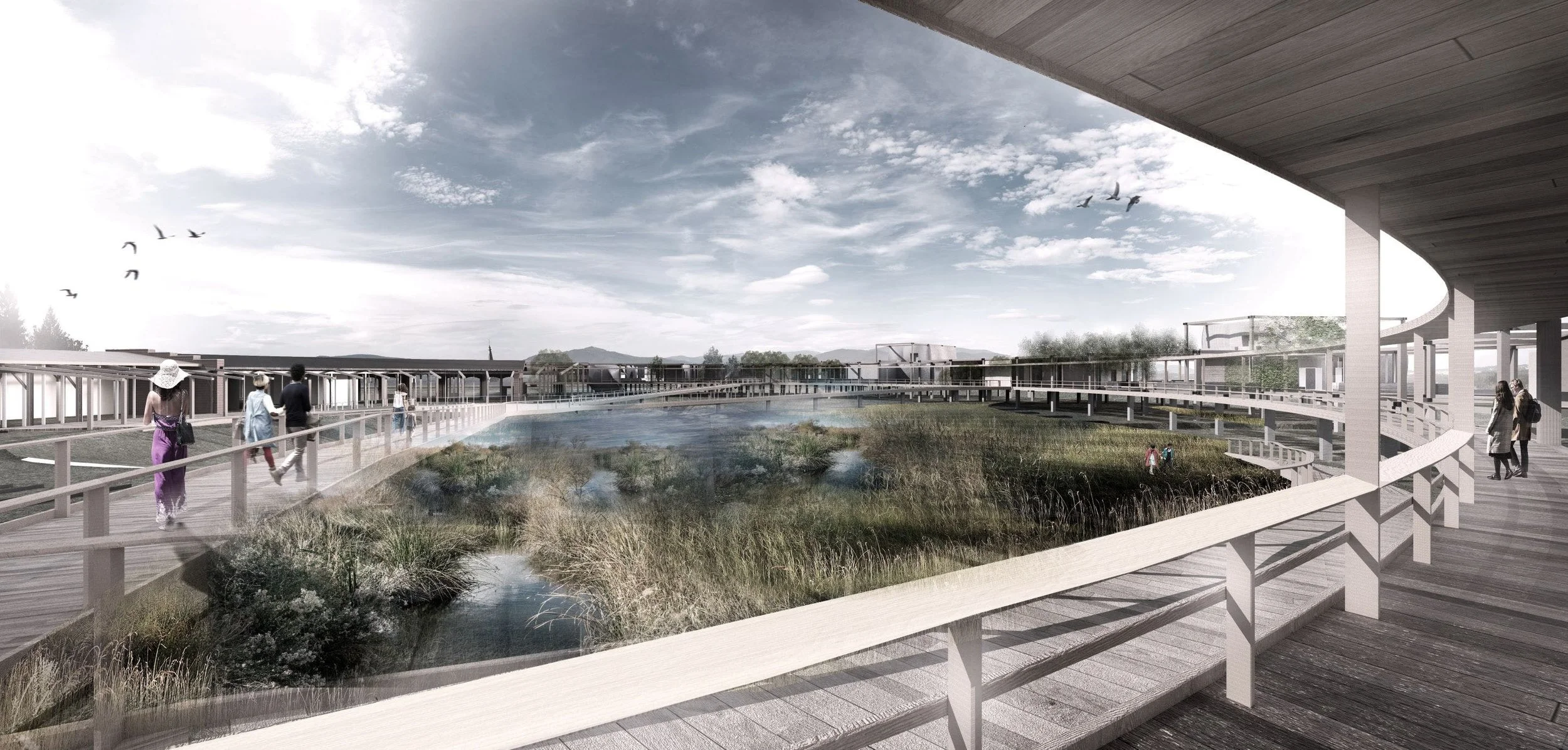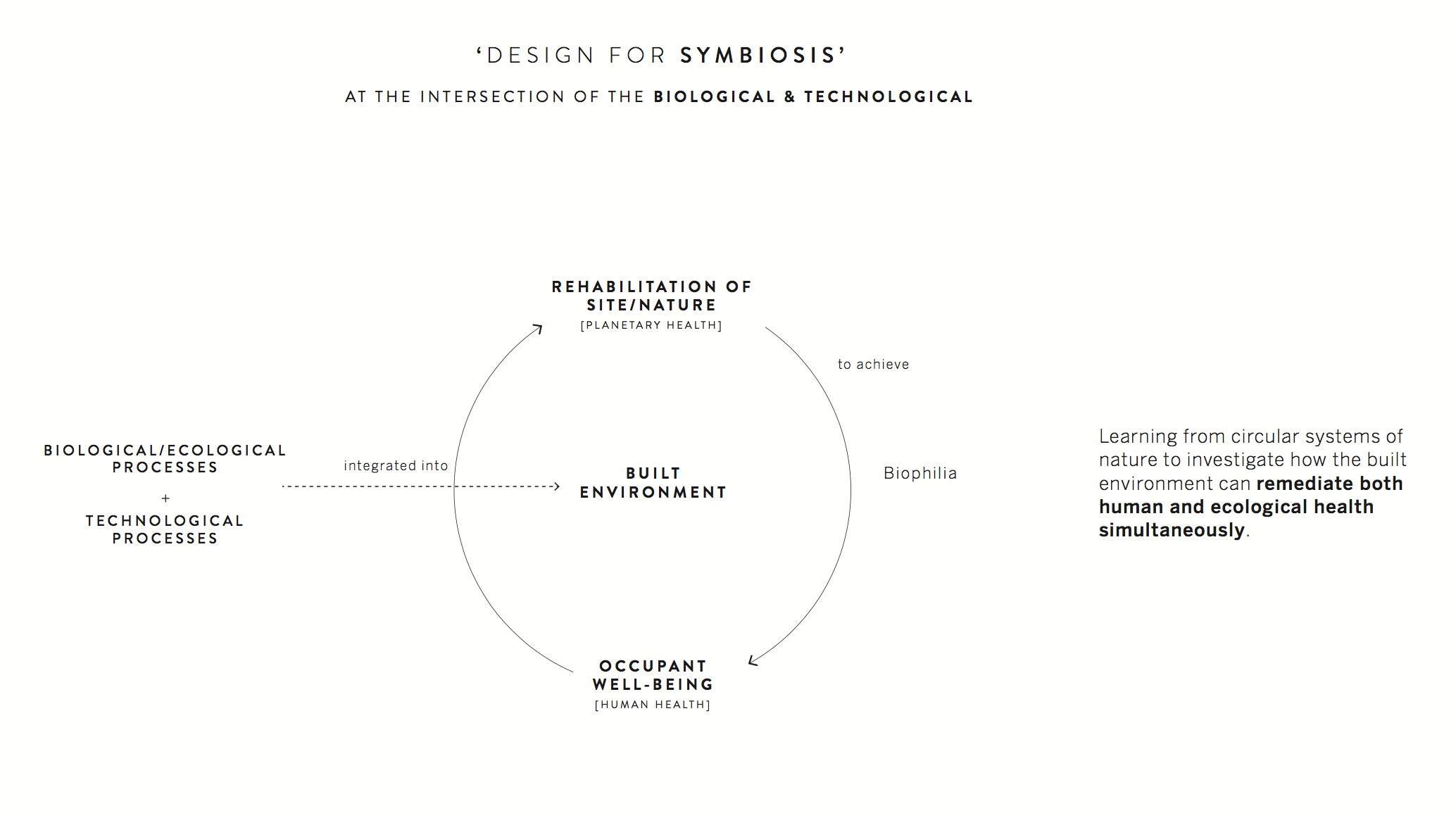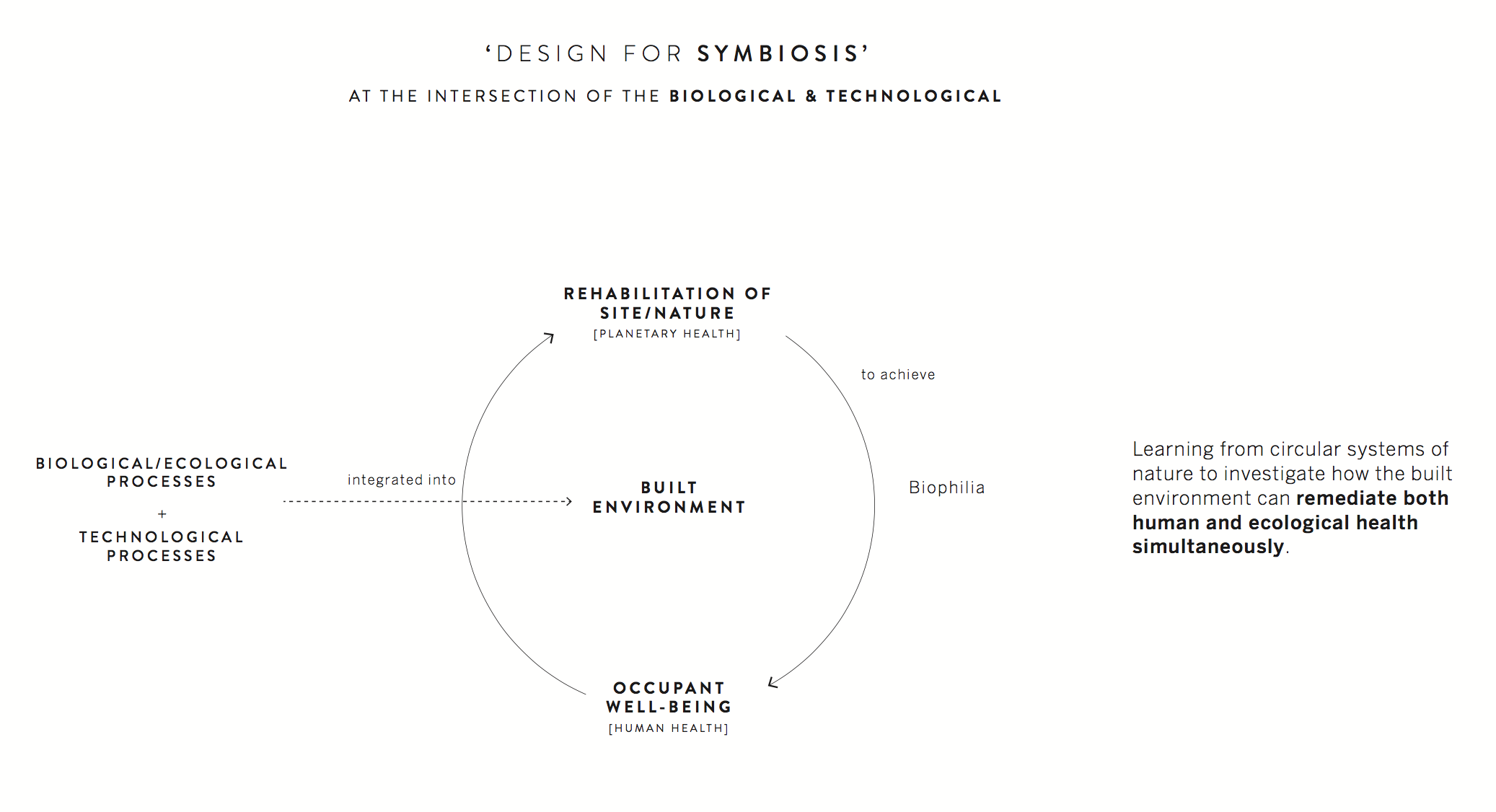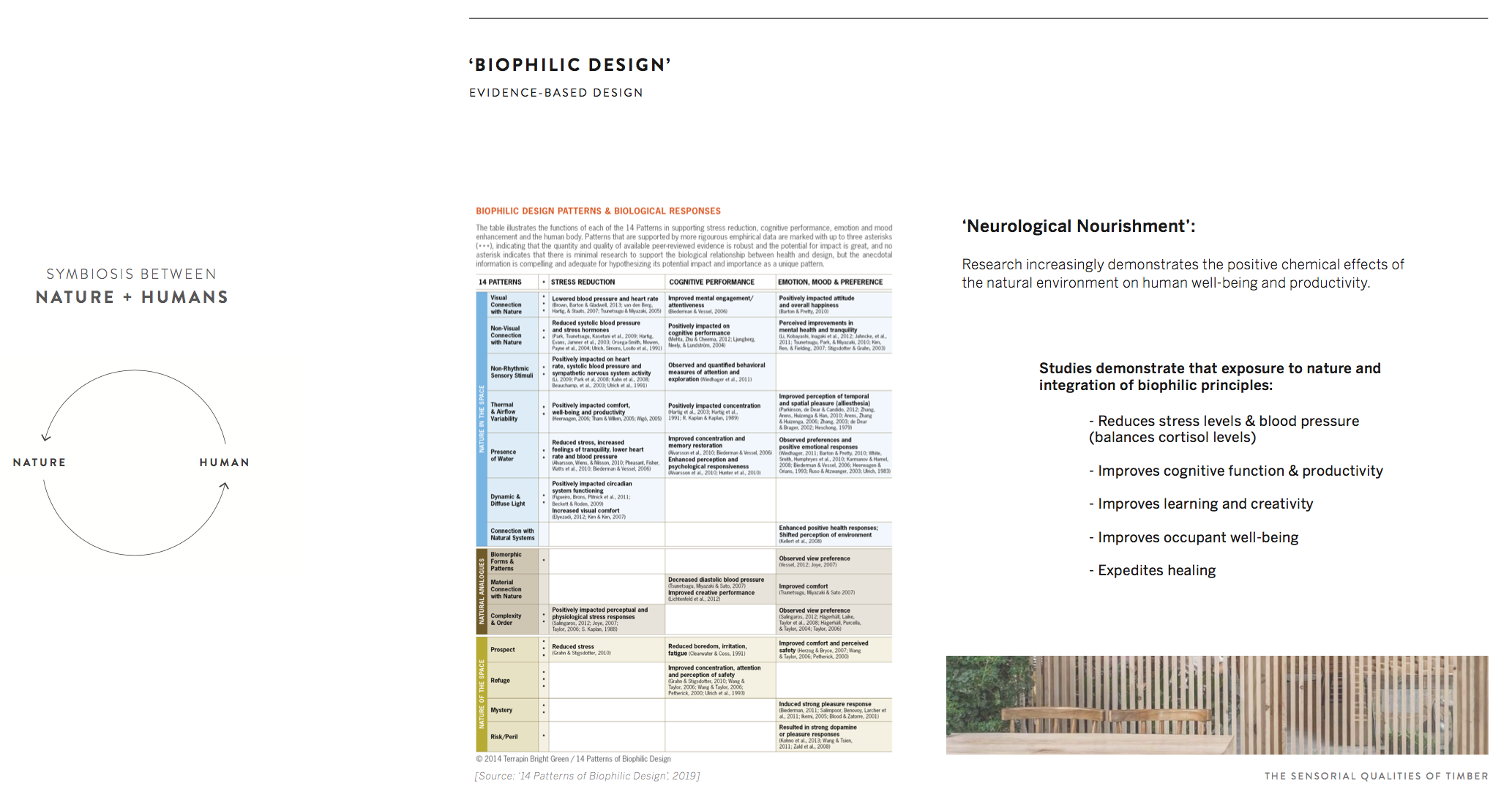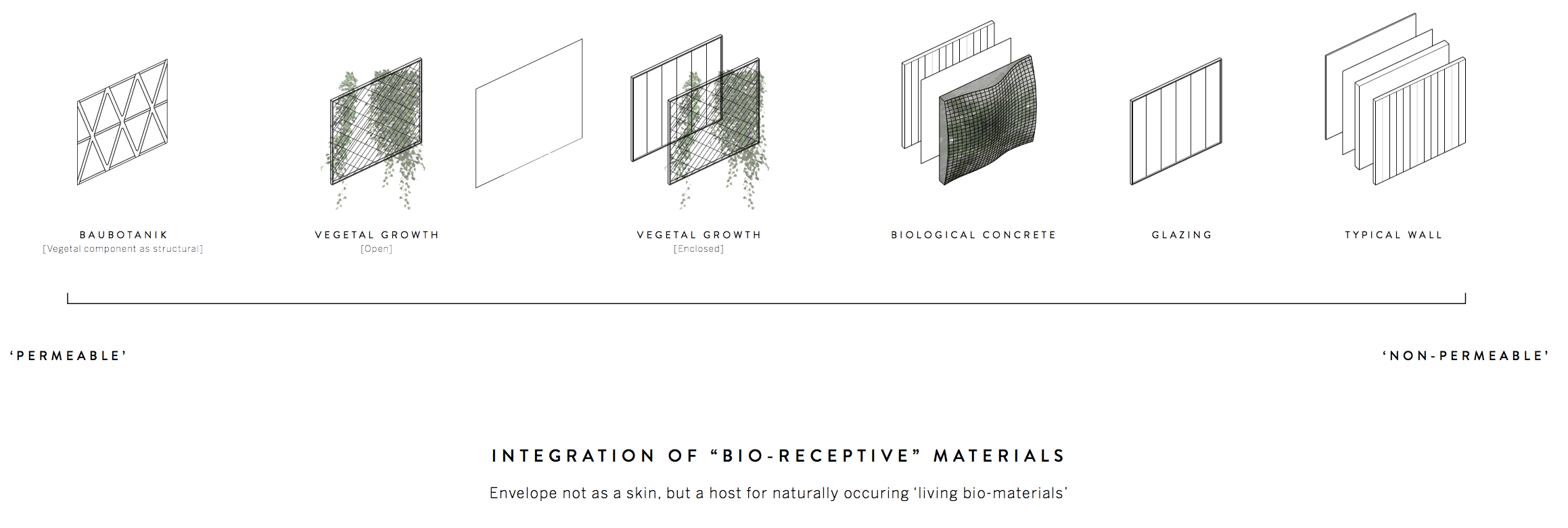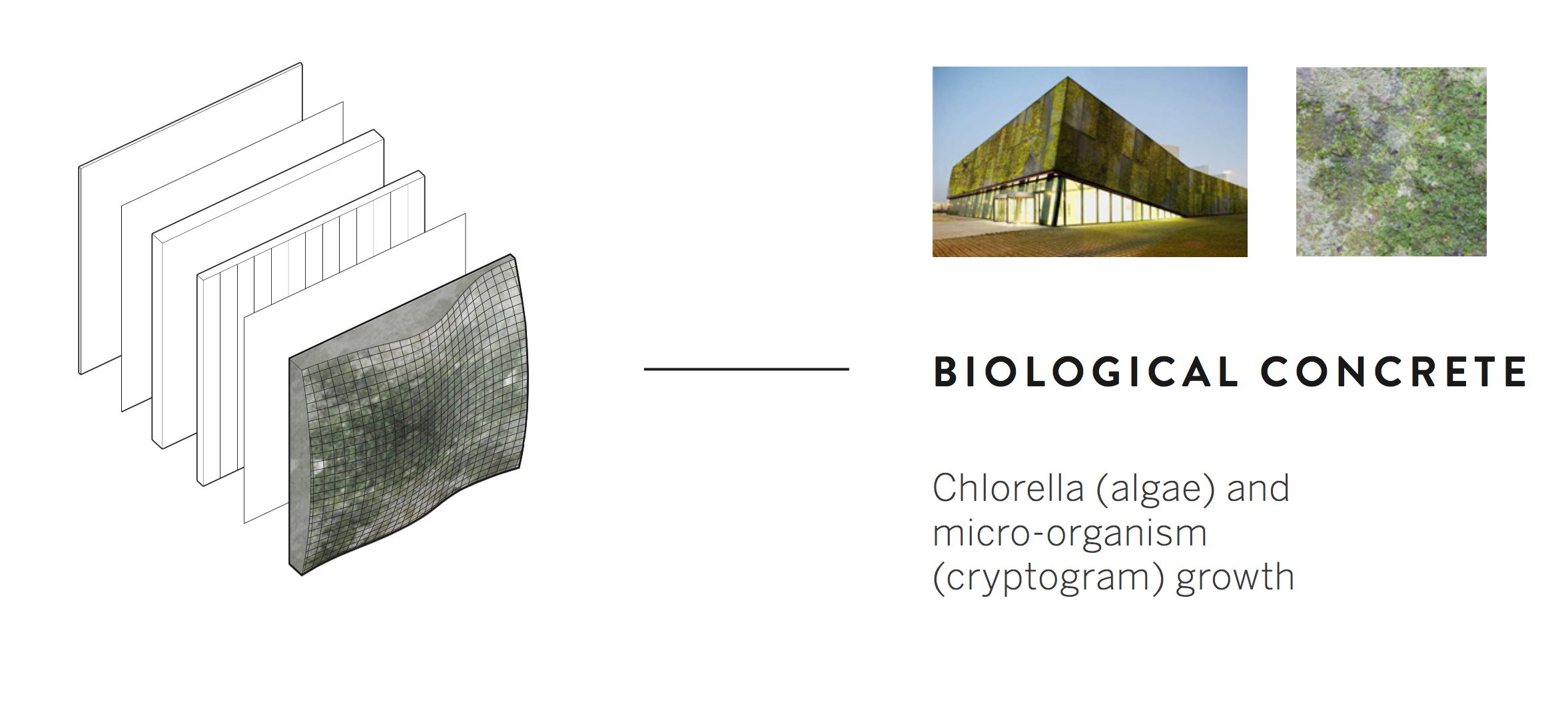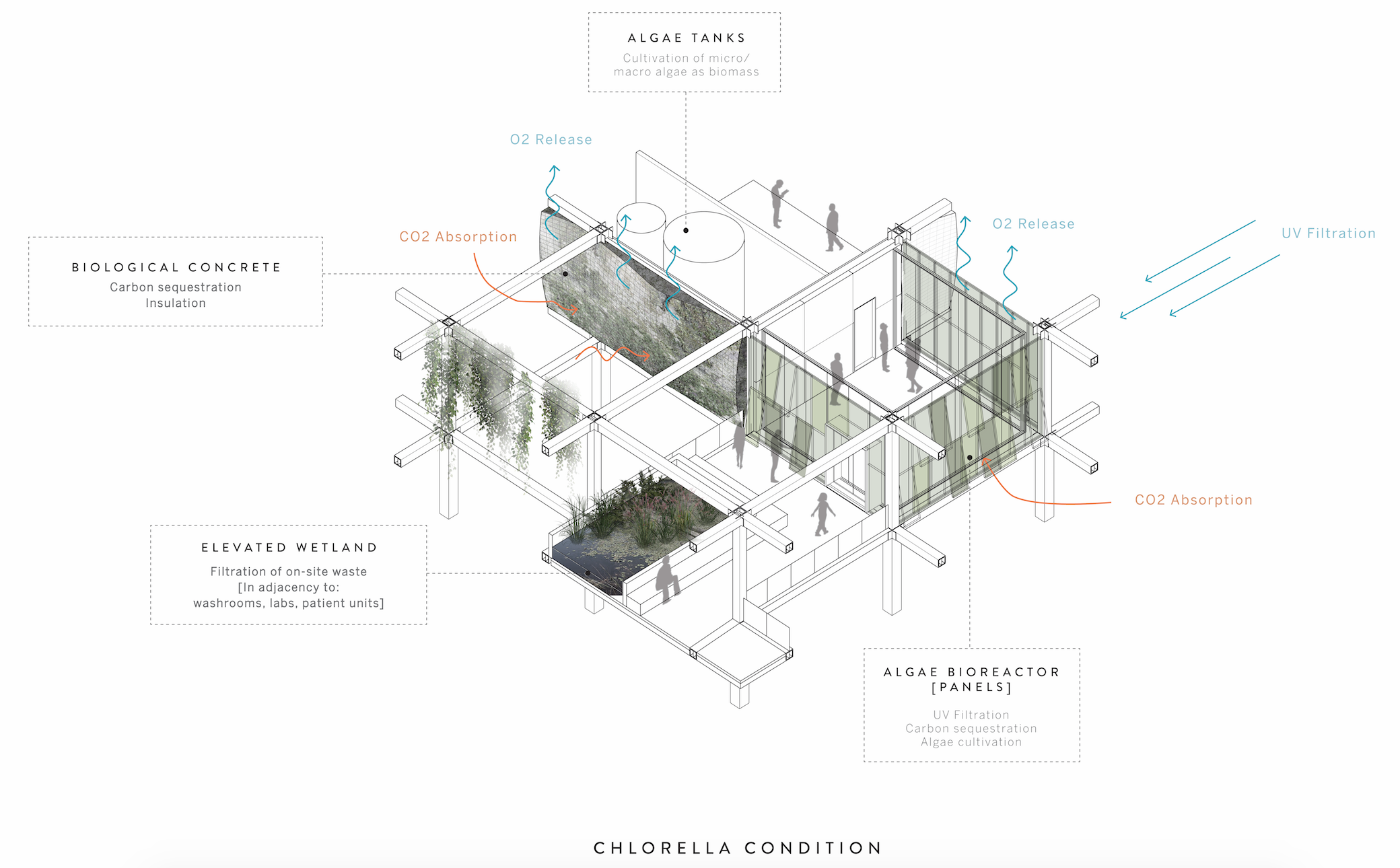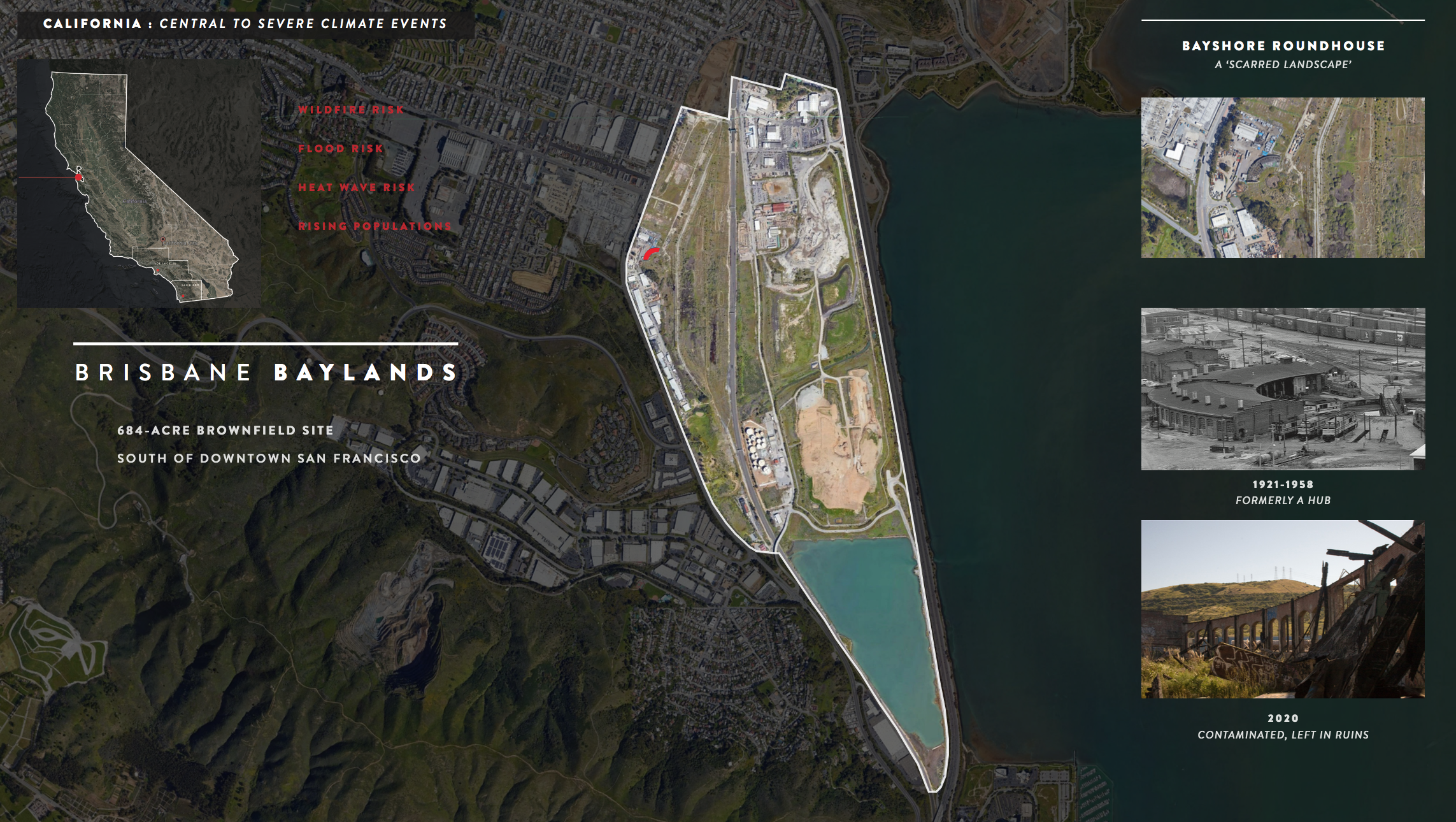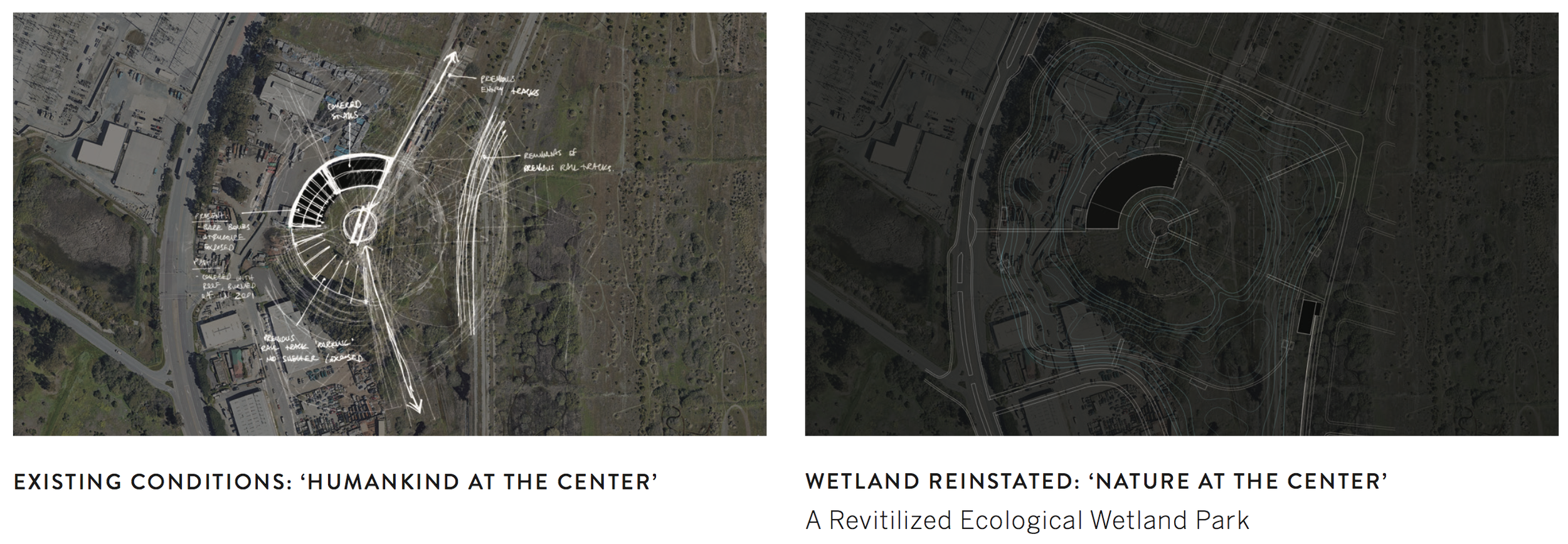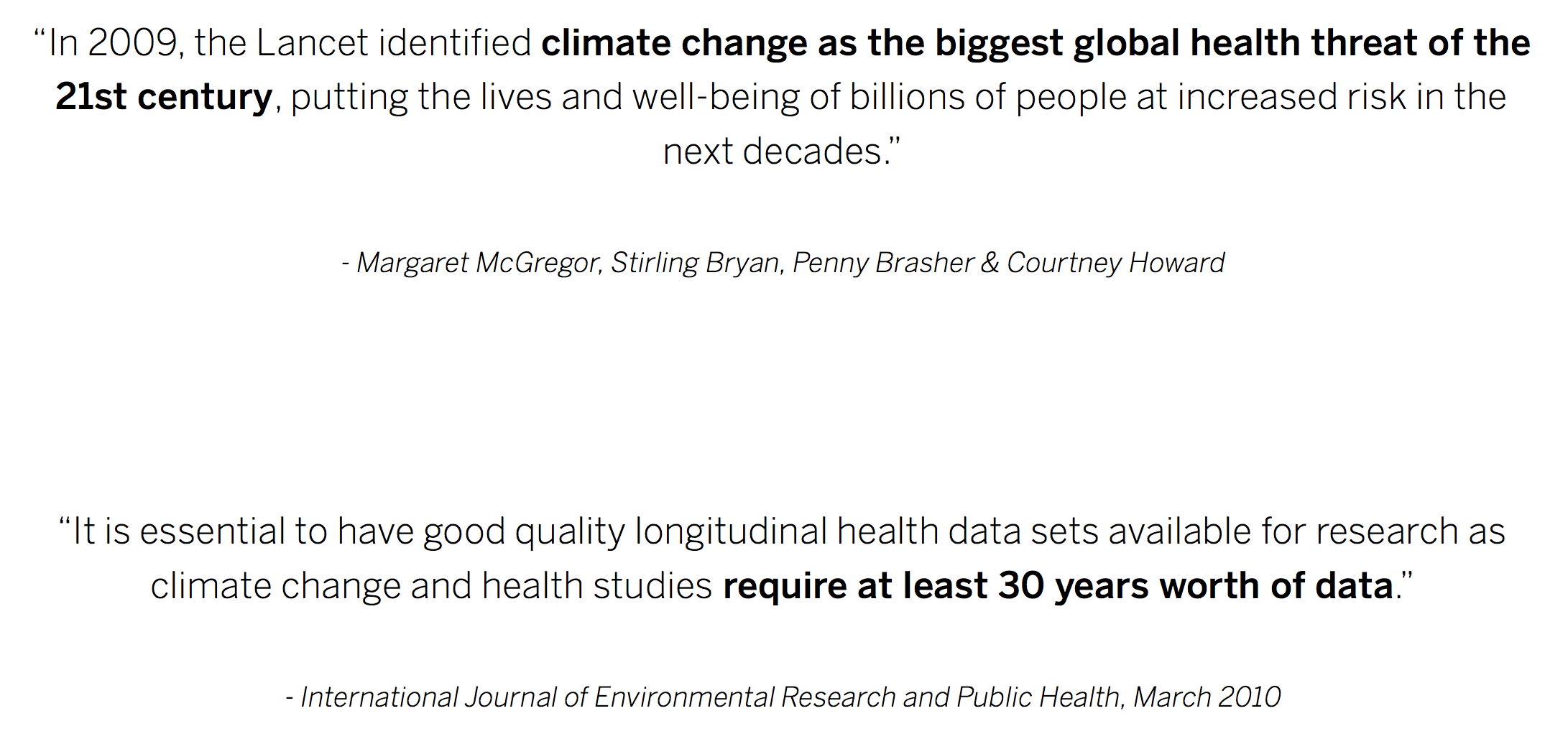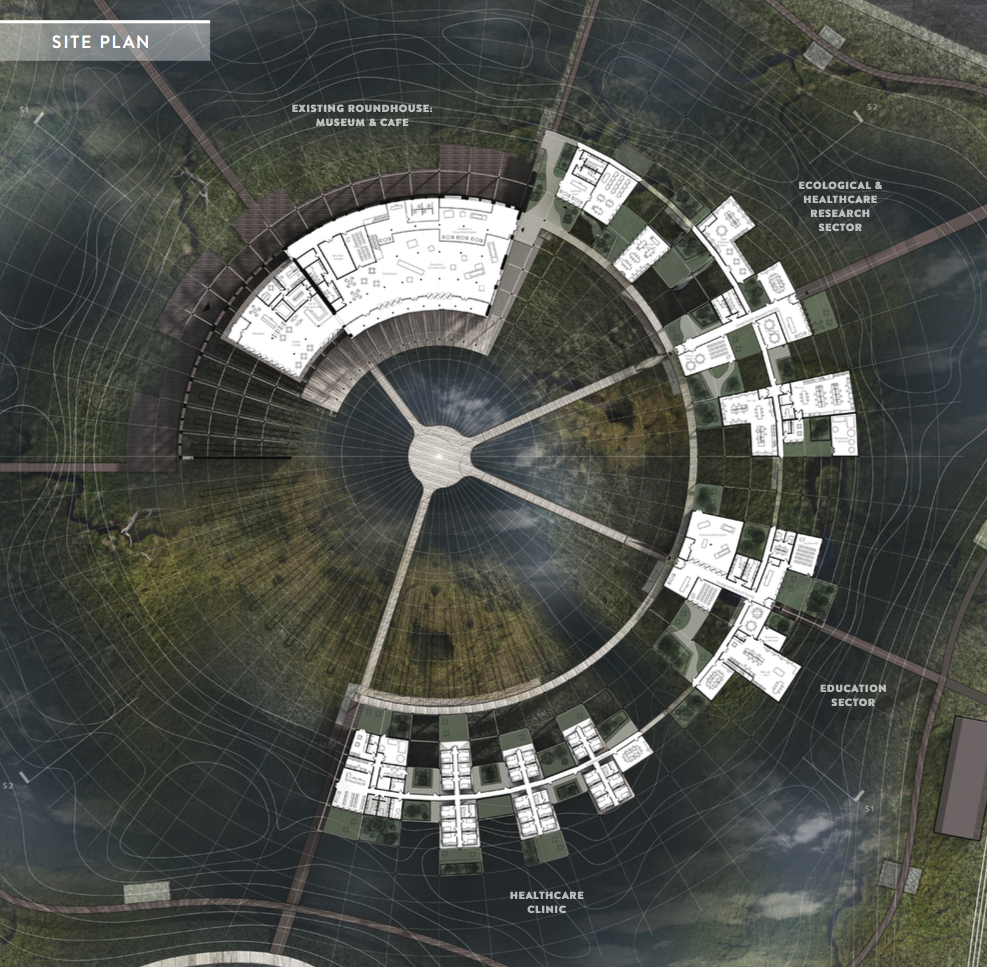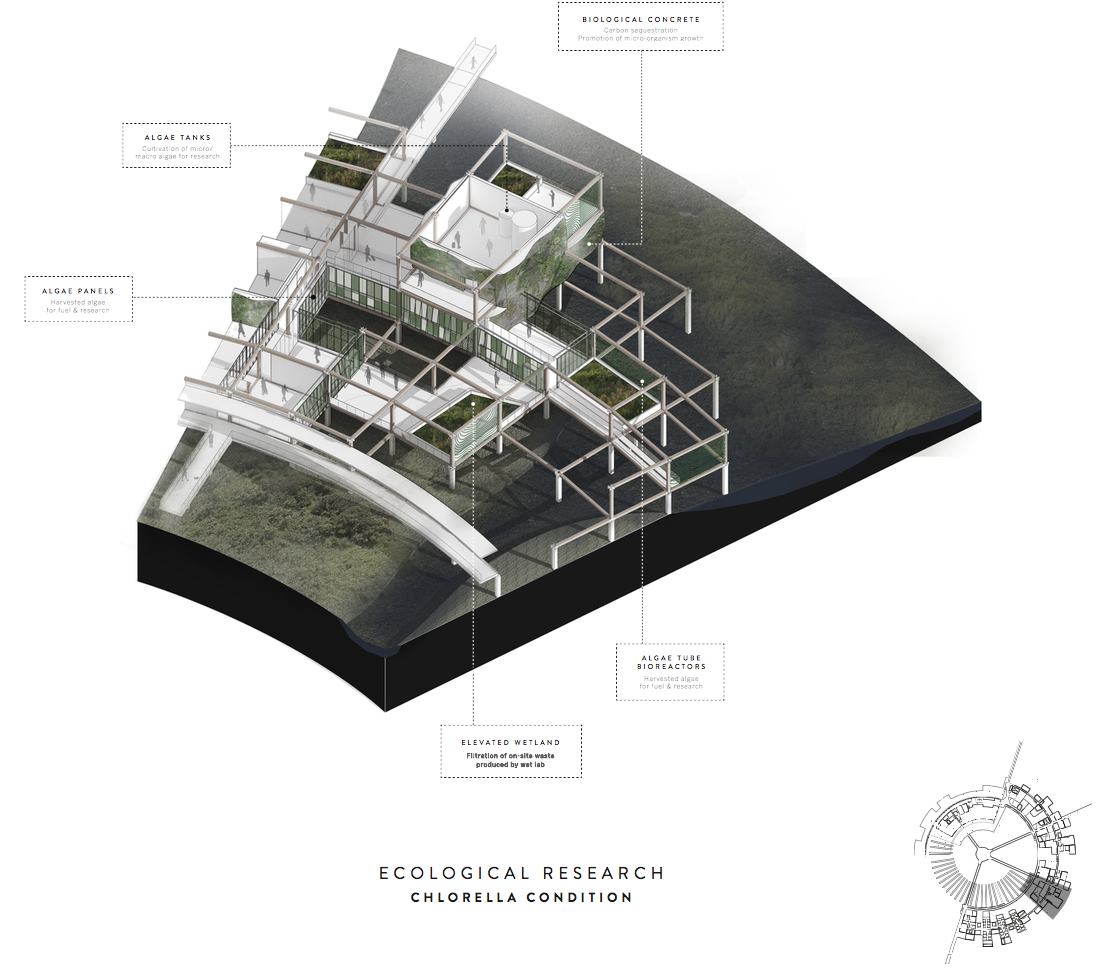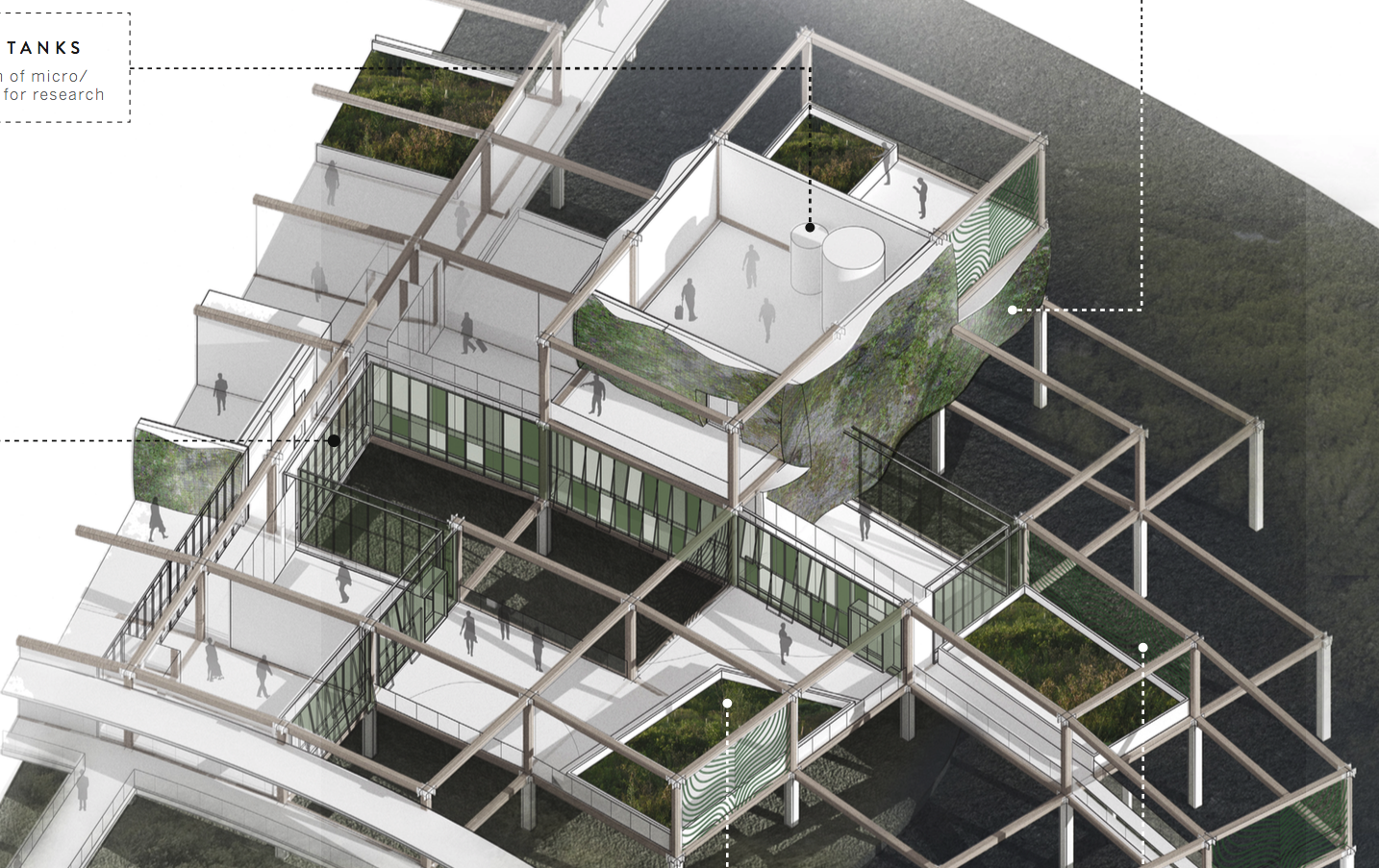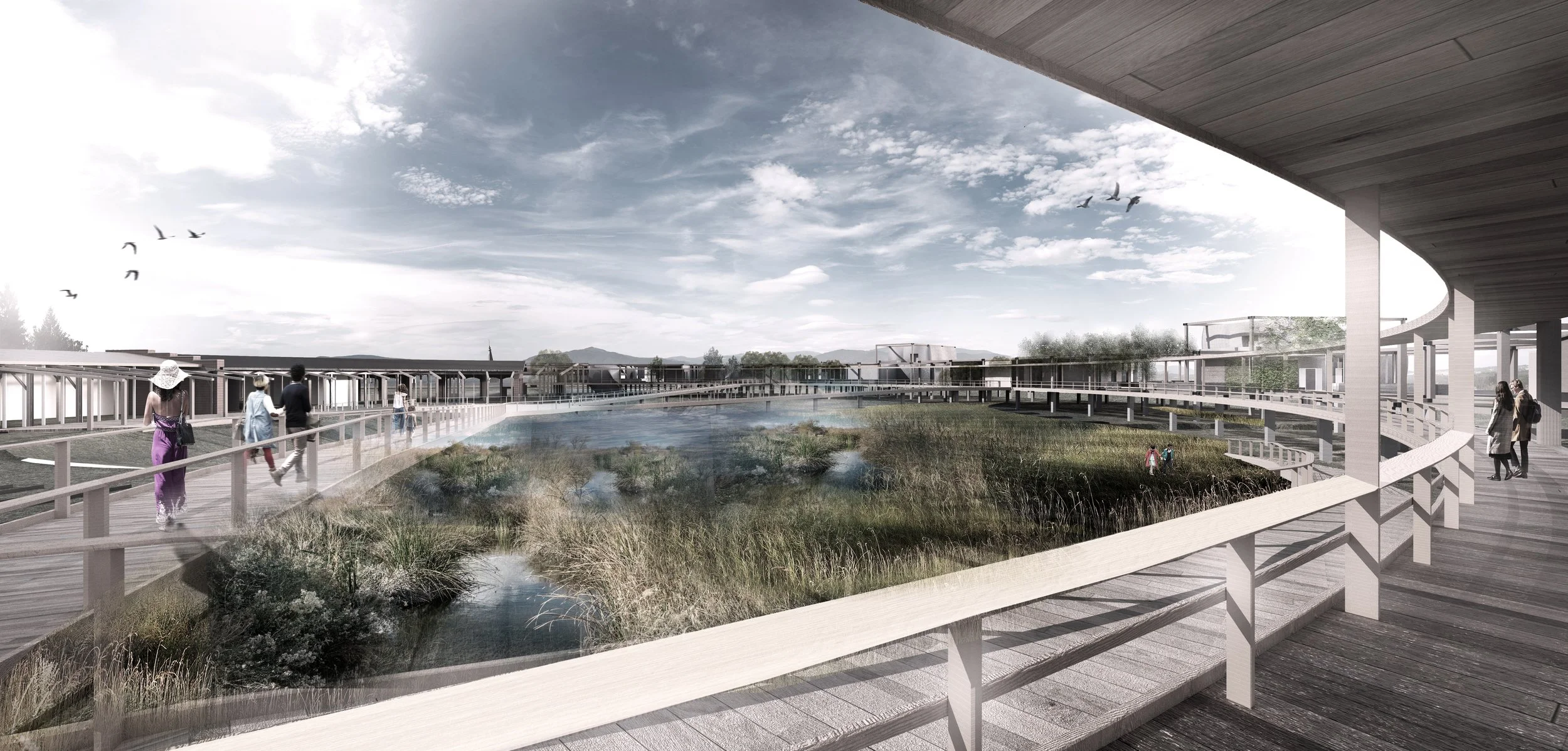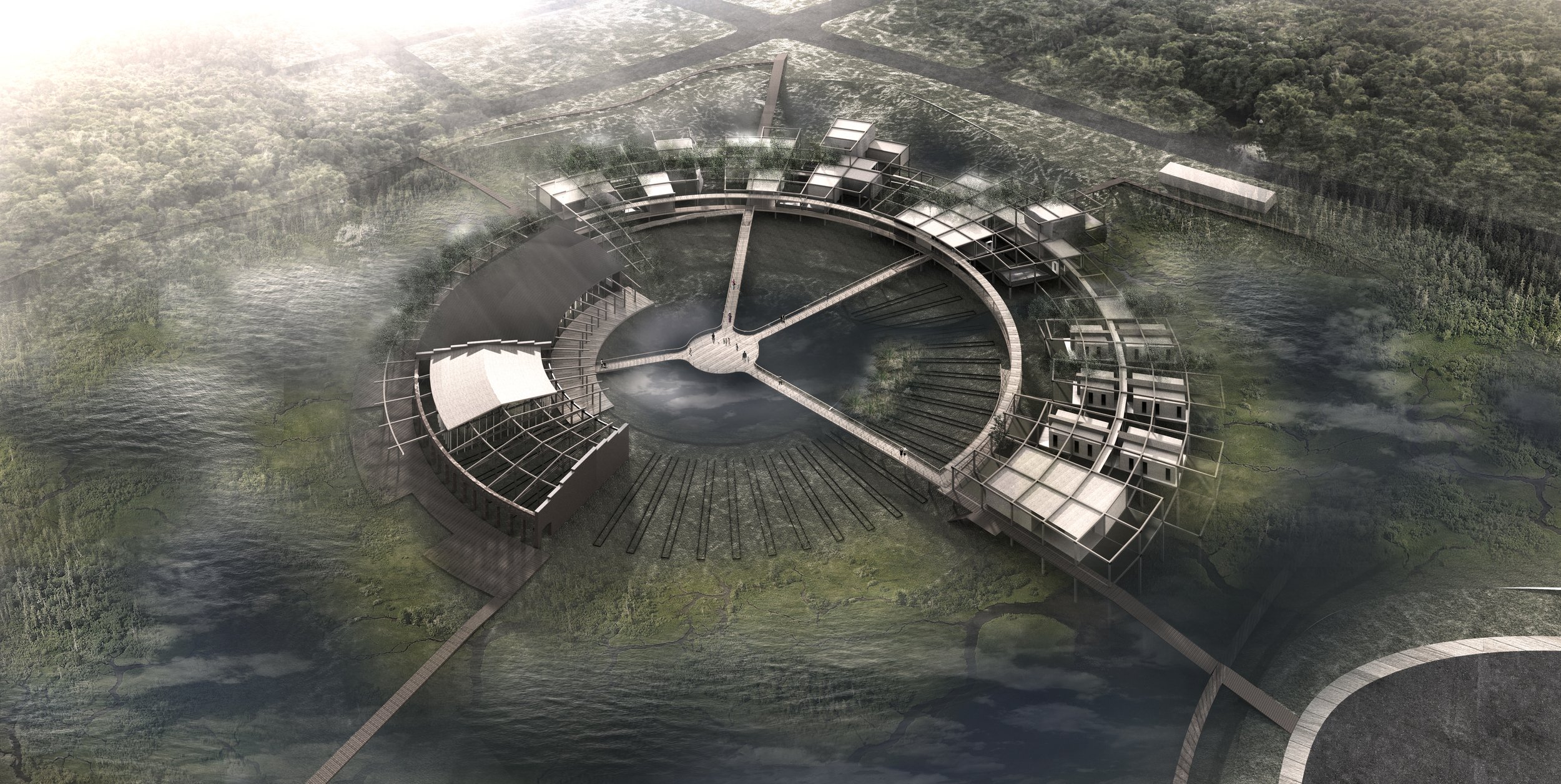
Symbiotic Ecologies
M.Arch Thesis, 2019
Nature always seeks to achieve a state of equilibrium—and now human’s continued dominance and exploitation of the planet’s resources are disrupting the balance of ecological systems around the world.
‘Symbiotic Ecologies’ responds to the growing correlation between anthropogenic climate change, ecological ramifications, and human health— by attempting to remedy architecture’s contribution to this relationship. This thesis explores the potential for a symbiotic co-existence between nature and humankind.
The need to change the way we live and construct our environments is becoming increasingly imperative. This thesis explores the possibility where the built environment and ecological systems are longer be conceived of as separate entities, but rather that a synergy can be achieved through the direct integration of biological systems within the built environment.
Within the research facility and ecological wetland park
Identifying the imbalanced state of ecological systems today, research has shown that human’s impact on Earth’s ecologies is now consequently impacting human health. A growing body of evidence is demonstrating that the industry of architecture (and notably healthcare architecture) is negatively contributing to anthropogenic climate change- and thus the well-being of humans as well as other living beings.
The way in which the modern economy operates within a linear system (where resource becomes waste) is at odds with circular systems that occur intrinsically within nature (where waste becomes resource).
Driven by the need to address the growing urgency of the climate crisis, a radical shift in thinking must be made in order for the adaptation and resiliency of communities all around the world. This thesis proposes that the built environment and ecological systems should no longer be conceived of as separate entities, but rather that a symbiosis can be achieved between the natural environment, the built environment, and its human occupants.
This notion of symbiosis arises from observing mutualistic relationships that occur within natural ecosystems. Microbes, plants, and animals have practiced this reciprocity within natural ecosystems for millennia, and scientists are only beginning to uncover how the success of ecosystems depend on these mutualistic, cooperative relationships that occur across all scales of life.
Recent studies are also demonstrating that humans benefit from the intrinsic healing and restorative properties of nature- one such emerging concept is called ‘Biophilia’. By exposure to natural elements (such as walking through a forest, or even viewing images of natural landscapes) an individual’s blood pressure lowers and oxytocin levels are increased- among a much more extensive list.
From this understanding, a fundamental question arises:
In the same way that the built environment helps its human inhabitants, can architecture help remediate Nature while Nature remediates the well-being of humankind?
This creates the vision of a regenerative circle- a circular system that mirrors a circular, closed-ended biological system in which nature has operated within for millennia; a system where nutrient becomes waste, and waste becomes nutrient.
Translating the ‘linear’ operation of today’s economy into that of a ‘circular’ closed-ended loop of symbiosis, the site becomes a testing grounds in which the built environment seeks to instate a symbiotic coexistence with nature; one where the built environment acts as a medium in which both human and planetary health is remediated simultaneously.
Two approaches were proposed:
‘Design for Symbiosis’, and ‘Design for Disassembly’.
The concept of ‘Design for Symbiosis’ entails long-term interventions designed with intent of constructed elements existing symbiotically with its natural surroundings during its lifetime, and eventually ‘subsuming’ or returning back to the land. ‘Design for Disassembly’ entails short-term interventions designed with the intent of a continual re-use of its components- existing today as mass timber elements such as CLT. Both concepts are an adaptation and a response towards the circular function of the natural world. The final intervention employs both, but the concept of ‘Design for Symbiosis’ is more thoroughly applied here.
Technological and biological systems should no longer be conceived of as separate entities. How can biological and technological systems be integrated together for the benefit of both?
The intervention proposes dissolving the boundary between ecological systems and the constructed environment. This is achieved through the ‘ecological permeation’ of:
1. Envelopes (what is known as traditional building envelopes)
2. Spatial Division (‘controlled’ interior space vs ‘uncontrolled’ exterior space).
The Intervention In Theory
Permeation of the Envelope
Permeation of Spaces
The concept of ‘envelope Permeability’ explores an ‘ecological permeation’ of the building envelope- a dissolution of what is ‘controlled’ or allowed to be ‘uncontrolled’. The ‘dissolution’ of the traditional building envelope is broken down, where surfaces encourage biological growth, which is supported by a structural framework that evolves into something ‘living’.
Similar to Neri Oxman’s line of thinking, what if architecture could be grown, instead of assembled? How can we celebrate the capabilities of natural materials, and allow natural biological growth (such as algae or mycelium) to invite resiliency to the envelope?
The concept of ‘spatial permeability’ explores an ‘ecological permeation’ of spatial division- a dissolution of what is ‘inside’ (controlled) or ‘outside’ (uncontrolled). A standardized grid is provided, in which the degree of ‘control’ is dissolved. Biological systems are encouraged to grow and thus enable its human occupants to experience biophilia, and the ‘loosening’ of the boundary between natural and artificial ecosystems- to ultimately achieve symbiosis.
The Intervention in Application
Biological System in Theory:
Chlorella Condition
Biological System in Theory:
Mycelial Condition
The intervention introduces two emerging biological systems, or ‘bio-reactors’: Chlorella (algae) and Mycelium (fungi). Chlorella concrete and algae panels absorb vast amounts of carbon dioxide from the air, act as UV filters, can be used as biofuel, and releases copious amounts of oxygen.
Mycelium, the ‘binding roots’ of fungi, are organisms that have structural properties, are water-resistant, and can literally ‘grow’ structural members or walls. The use of current technologies like these demonstrates the potential for humans and nature to symbiotically co-exist and operate within a constructed environment.
The Intervention In Application
Identifying a site that bears the scars of capitalocenic activity, the intervention sits at an abandoned railyard south of San Francisco, in dire need of restoration and decontamination.
Historically, San Francisco Bay was a thriving estuary full of biodiversity, but by 1961, 90% of the Bay’s wetlands had disappeared. Acknowledging the Bay’s former state, this intervention reclaims its rich ecological history by reinstating the wetlands, inviting future biodiversity while adding further resiliency to the site.
Site Selection: Bayshore Roundhouse, SF California
California is central to severe climate events, as depicted in the diagrams above
The Bayshore Roundhouse had once been a mecca of human civilization; a symbol of humankind at the center.
What happens when the narrative is flipped and we place nature at the center?
Programming: A Research Facility for Ecological & Human Health
A centre for research in resiliency, mitigation, and adaptation
A timber ‘space frame’ is set above a newly reinstated 'ecological wetland park', catering to a modular research facility for ecological health and human health, as well as an emergency climate health clinic. This ‘augmented ecology’ of wetland and research facility becomes the platform for which biological systems and human occupants operate in symbiosis- whilst ‘letting Nature be’.
In application, the ‘envelope’ and ‘spatial’ concepts are combined and coalesce onto the ‘biological framework’, or timber space frame that is set upon the abandoned railyard. The Chlorella and Mycelium systems are integrated in correlation with each program of the research facility. A concept of ‘design for disassembly/deconstruction’ and use of easily deconstructed CLT is applied to the climate healthcare clinic where occupation is expected to fluctuate.
The future of the site accepts unplanned and unexpected conditions that may arise from the intersection of biological and technological systems within a constructed environment. As nature always finds a way to reclaim its native property, the intervention invites an ‘accelerated’ occupation of nature within the site. By this means, the built environment may be transformed into a ‘continually alive’ and evolving ecosystem- accepting fluctuating yet inevitable conditions such as death, decay, and ultimately re-birth.
There is a greater need now more than ever to consider a new kind of architectural system that integrates the kinds of symbiotic relationships that pre-exist in nature. We should attempt, as MIT Mediated Matter Group states, to “apply the intrinsic intelligence of natural ecologies to the way we design and fabricate the built environment.”
This proposal explores the integration of biological systems within the building envelope or through spatial organization. It presents the possibility of how biological niches could become a part of the technological ecosystem. By dissolving the border between natural ecosystems and artificial ecosystems, could humanity re-establish a state of equilibrium in the natural world? Or by doing so, is a new form of ecosystem introduced?
As a result, it allows for circular growth and development that may simultaneously benefit both humankind and ecosystems alike-
Ultimately seeking to establish a symbiotic co-existence with the natural world.
Final Intervention
Rather, it presents the opportunity to integrate the intrinsic intelligence of natural ecologies directly within the built environment.
Restored Wetland & Pedestrian Bridge
The imbalance of geological systems is demonstrating that the built environment and ecological systems should no longer be conceived of as separate entities.
Wetland Passageway


